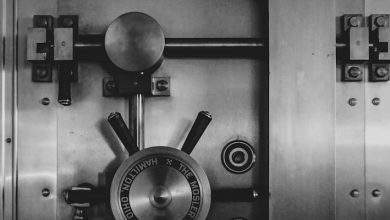How to Set Up a Hardware Wallet for Beginners

- What is a hardware wallet and why it’s important for storing cryptocurrencies
- Benefits of using a hardware wallet over other storage methods
- Choosing the right hardware wallet for your needs and budget
- Step-by-step guide to setting up your hardware wallet for the first time
- Securing your hardware wallet and best practices for keeping your funds safe
- Troubleshooting common issues when setting up a hardware wallet
What is a hardware wallet and why it’s important for storing cryptocurrencies
A hardware wallet is a physical device that securely stores the private keys necessary to access your cryptocurrencies. Unlike software wallets, which are connected to the internet and therefore vulnerable to hacking, hardware wallets are offline and provide an extra layer of security. This makes them an essential tool for anyone looking to safely store their digital assets.
One of the main reasons why a hardware wallet is important for storing cryptocurrencies is that it protects your funds from potential cyber attacks. By keeping your private keys offline, you significantly reduce the risk of unauthorized access to your assets. This added security measure gives you peace of mind knowing that your investments are safe and secure.
Furthermore, hardware wallets are user-friendly and easy to set up, making them ideal for beginners in the world of cryptocurrency. With a simple installation process and clear instructions, even those new to digital currencies can quickly learn how to use a hardware wallet to safeguard their funds. This accessibility is crucial for ensuring that anyone can protect their investments, regardless of their level of experience.
Benefits of using a hardware wallet over other storage methods
One of the main benefits of using a hardware wallet over other storage methods is the enhanced security it provides. Hardware wallets are offline devices that store your cryptocurrency keys securely, making them less vulnerable to hacking and cyber attacks. This added layer of protection gives users peace of mind knowing that their digital assets are safe from online threats.
Additionally, hardware wallets offer convenience and ease of use. With a hardware wallet, you can easily manage your cryptocurrency transactions without the need for complicated software installations or technical know-how. The simple interface makes it accessible for beginners to set up and use, making it a popular choice for those new to the world of cryptocurrency.
Moreover, hardware wallets are durable and reliable. Unlike paper wallets or online exchanges, hardware wallets are designed to withstand physical damage and last for an extended period. This longevity ensures that your cryptocurrency keys are safe and accessible whenever you need them, without the risk of loss or theft.
In conclusion, using a hardware wallet for storing your cryptocurrency offers a secure, convenient, and reliable solution for managing your digital assets. By taking advantage of the enhanced security features, ease of use, and durability of hardware wallets, you can safeguard your investments and have peace of mind knowing that your cryptocurrency is protected from online threats.
Choosing the right hardware wallet for your needs and budget
When it comes to setting up a hardware wallet, choosing the right one for your needs and budget is crucial. There are several factors to consider when making this decision:
1. **Security features**: Look for a hardware wallet that offers advanced security features such as PIN protection, passphrase support, and multi-factor authentication. These features will help keep your cryptocurrency safe from hackers and other threats.
2. **Supported cryptocurrencies**: Make sure the hardware wallet you choose supports the cryptocurrencies you plan to store. Some wallets only support a limited number of coins, so it’s important to check compatibility before making a purchase.
3. **User interface**: Consider the user interface of the hardware wallet. A user-friendly interface can make it easier to set up and use the device, especially if you’re new to cryptocurrency.
4. **Price**: Hardware wallets range in price from around $50 to $200 or more. Consider your budget and choose a wallet that offers the features you need at a price you can afford.
5. **Reviews and reputation**: Before making a decision, read reviews and research the reputation of the hardware wallet manufacturer. Look for feedback from other users to get a sense of the device’s reliability and performance.
By considering these factors, you can choose the right hardware wallet for your needs and budget. Remember, the security of your cryptocurrency depends on the quality of the hardware wallet you choose, so take the time to research and make an informed decision.
Step-by-step guide to setting up your hardware wallet for the first time
To set up your hardware wallet for the first time, follow these step-by-step instructions. Firstly, unpack your hardware wallet and connect it to your computer using the USB cable provided. Make sure the device is fully charged before proceeding.
Next, visit the official website of the hardware wallet manufacturer and download the compatible software for your device. Install the software on your computer and follow the on-screen instructions to set up your wallet. Create a strong and unique password to secure your wallet.
After setting up the software, your hardware wallet will generate a seed phrase. This seed phrase is crucial for recovering your wallet in case it is lost or damaged. Write down the seed phrase on a piece of paper and store it in a safe place. Do not store it digitally to prevent hacking.
Once you have completed the seed phrase backup, your hardware wallet is ready to use. You can now send and receive cryptocurrencies securely. Remember to keep your hardware wallet and seed phrase safe at all times to protect your assets.
Securing your hardware wallet and best practices for keeping your funds safe
To ensure the security of your hardware wallet and protect your funds, it is essential to follow best practices. Here are some tips to help you keep your cryptocurrency safe:
- Set up a strong PIN code: Make sure to choose a unique and complex PIN code for your hardware wallet. Avoid using easily guessable numbers like your birthdate or sequential digits.
- Backup your recovery phrase: During the initial setup of your hardware wallet, you will be given a recovery phrase. It is crucial to write this down and store it in a safe place. Do not store it digitally or share it with anyone.
- Enable additional security features: Many hardware wallets offer extra security features like passphrase protection or multi-signature capabilities. Consider enabling these features for added protection.
- Keep your hardware wallet offline: When not in use, keep your hardware wallet disconnected from your computer and the internet. This reduces the risk of it being hacked remotely.
- Regularly update your firmware: Hardware wallet manufacturers often release firmware updates to patch security vulnerabilities. Make sure to regularly check for updates and install them promptly.
By following these best practices, you can significantly reduce the risk of unauthorized access to your funds and ensure the safety of your cryptocurrency investments. Remember, it is always better to be proactive in securing your hardware wallet than to deal with the consequences of a security breach.
Troubleshooting common issues when setting up a hardware wallet
If you encounter any issues while setting up your hardware wallet, there are a few common troubleshooting steps you can take to resolve them. One common issue is difficulty connecting your hardware wallet to your computer. If you experience this problem, try using a different USB cable or port to see if that resolves the issue. Additionally, make sure that you have installed the necessary drivers for your hardware wallet on your computer.
Another common issue is receiving error messages during the setup process. If you encounter an error message, try restarting both your hardware wallet and your computer. If the issue persists, check the manufacturer’s website for any troubleshooting guides or updates that may address the problem.
If you are having trouble accessing your funds after setting up your hardware wallet, double-check that you have correctly written down your recovery phrase and stored it in a safe place. If you have lost your recovery phrase, you may not be able to access your funds, so it is crucial to keep this information secure.
In some cases, you may encounter issues with the firmware on your hardware wallet. If you believe that the firmware is causing problems, check the manufacturer’s website for instructions on how to update the firmware. Updating the firmware may resolve any issues you are experiencing with your hardware wallet.
By following these troubleshooting steps, you can address common issues that may arise when setting up your hardware wallet. Remember to always keep your recovery phrase secure and up to date to ensure that you can access your funds when you need them.



